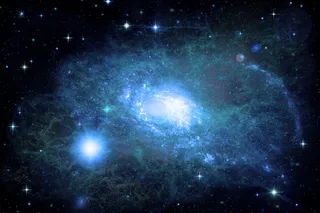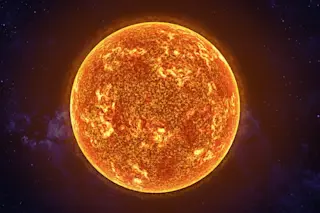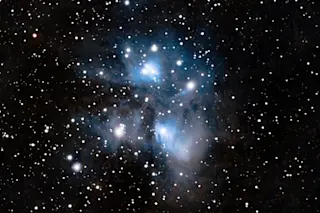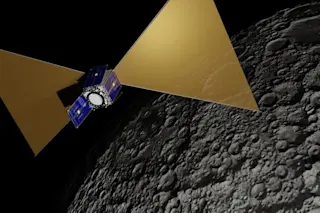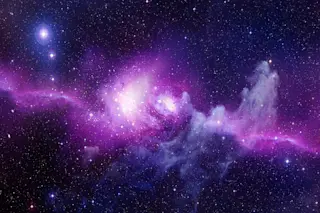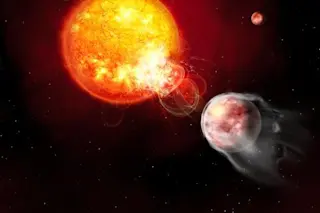This set of images shows the gravitationally lensed galaxy clusters where astronomers discovered the most distant star ever seen. The star, nicknamed Icarus, is marked by the white arrow in the bottom inset image. (Credit: NASA/ESA/P. Kelly (University of California, Berkeley)) In a study published today in Nature Astronomy, an international team of researchers announced the discovery of the most distant star ever observed. The team detected the blue supergiant star — which shone when the universe was just one-third its current age — with the help of both the Hubble Space Telescope and an observational phenomenon known as gravitational lensing. “This is the first time we’re seeing a magnified, individual star,” said Patrick Kelly, an astrophysicist of the University of Minnesota and lead author of the new study, in a press release. “You can see individual galaxies out there, but this star is at least 100 times farther away ...
Hubble Spots Farthest Star Ever Seen
Astronomers observed gravitationally lensed galaxy clusters to discover Icarus, the most distant star ever seen, revealing early universe secrets.
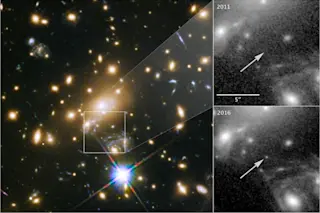
Newsletter
Sign up for our email newsletter for the latest science news
Jake Parks
Jake Parks is a freelance science writer and editor for Discover Magazine, who covers everything from the mysteries of the cosmos to the latest in medical research.View Full Profile
More on Discover
Stay Curious
SubscribeTo The Magazine
Save up to 40% off the cover price when you subscribe to Discover magazine.
Subscribe


